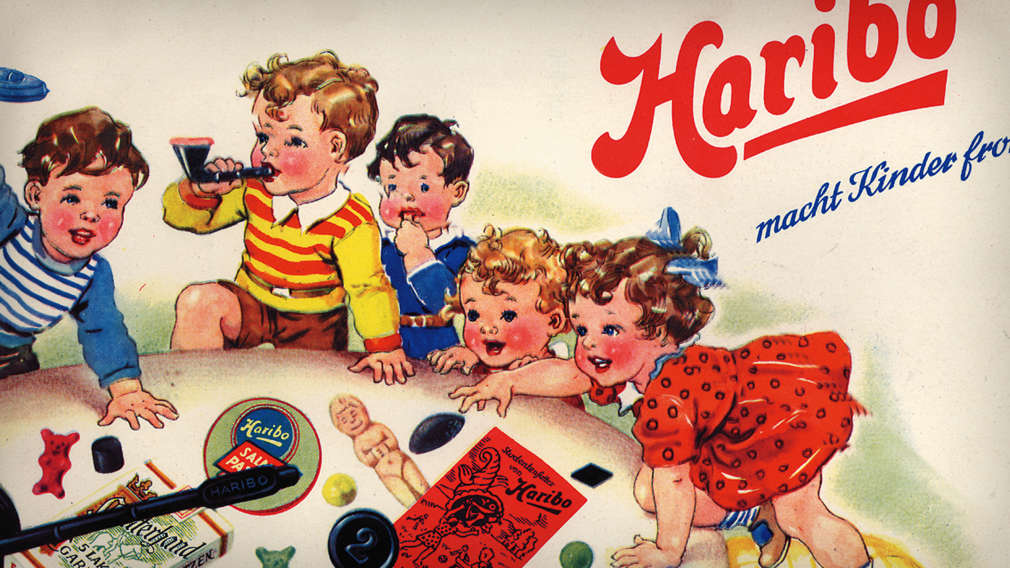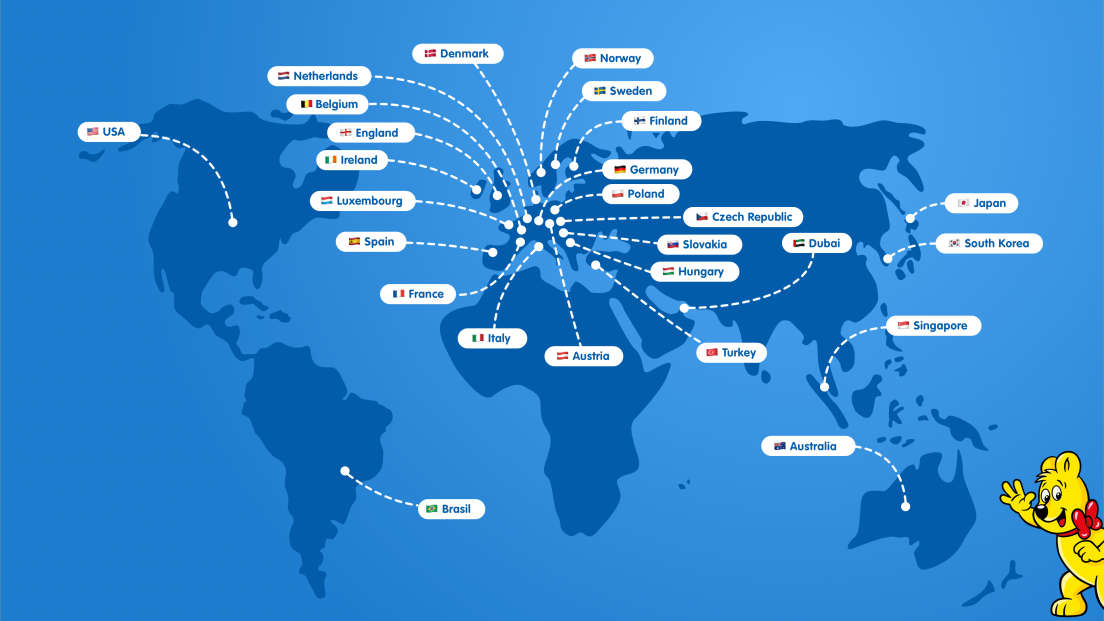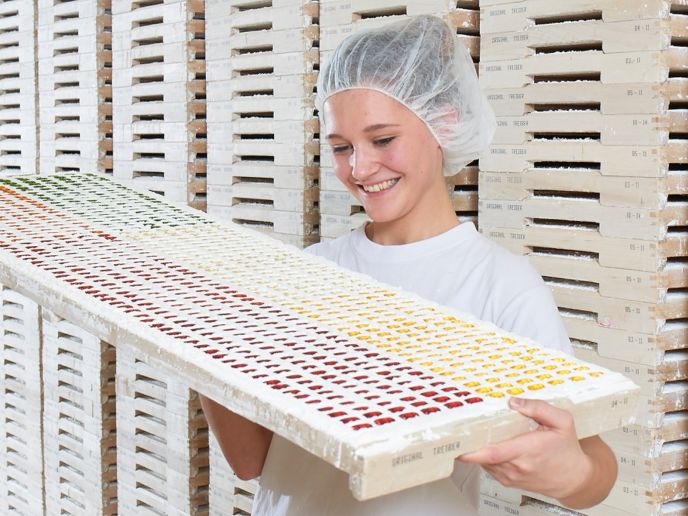As a family business in the third generation, we are celebrating our 100th anniversary in 2020. Have the Goldbears always had six colours? Who invented the HARIBO Liquorice Wheels? Many good questions! The answers lie in our company history: Have fun discovering them!
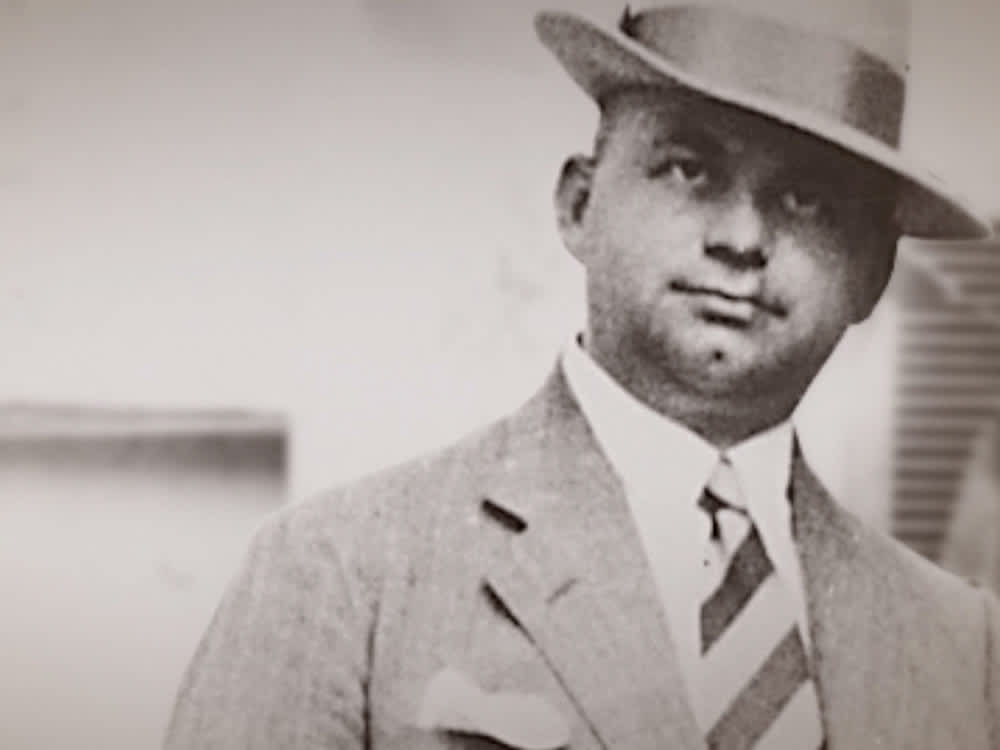
1920
A small sweets company
Born in Friesdorf near Bonn in 1893, Hans Riegel trains to be a confectioner and becomes a partner in the Heinen & Riegel company. He founds HARIBO (HAns RIegel BOnn) on 13 December 1920 and launches his sweets production in a small kitchen with nothing more than a sack of sugar, a marble slab, a stool, a stove, a copper pot and a rolling pin. His wife Gertrud becomes the new company’s first employee in 1921.

1922
The DANCING BEAR sees the light of day
Hans Riegel lays the first foundation stone for HARIBO’s success when he invents the DANCING BEAR – a fruit gummy bear that would one day become world-famous as the legendary HARIBO Goldbear. It was bigger than today’s Goldbears, but also slimmer. Two DANCING BEARS cost just one Pfennig in Germany, which is currently in the grip of inflation.
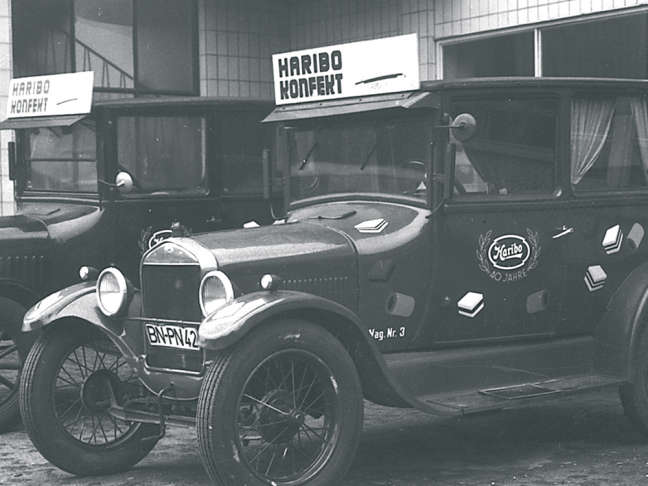
1923
The first company car
An increase in demand prompts the first investment in modern transport technology: HARIBO acquires its first car with advertising signs, which is used to supply customers from then on. Up until that point, his wife Gertrud has delivered the daily production by bicycle.
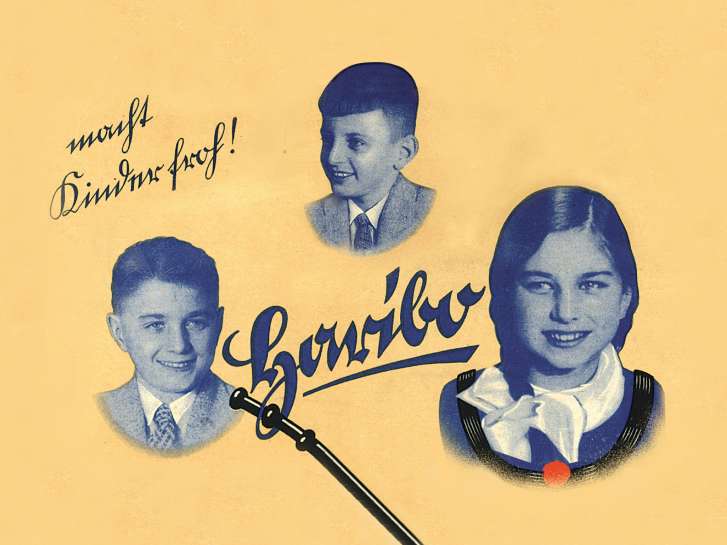
1923
Riegel family
Hans is born, the first of three children, followed by daughter Anita in 1924 and son Paul in 1926. Hans and Paul begin managing the HARIBO company in the mid-40s.
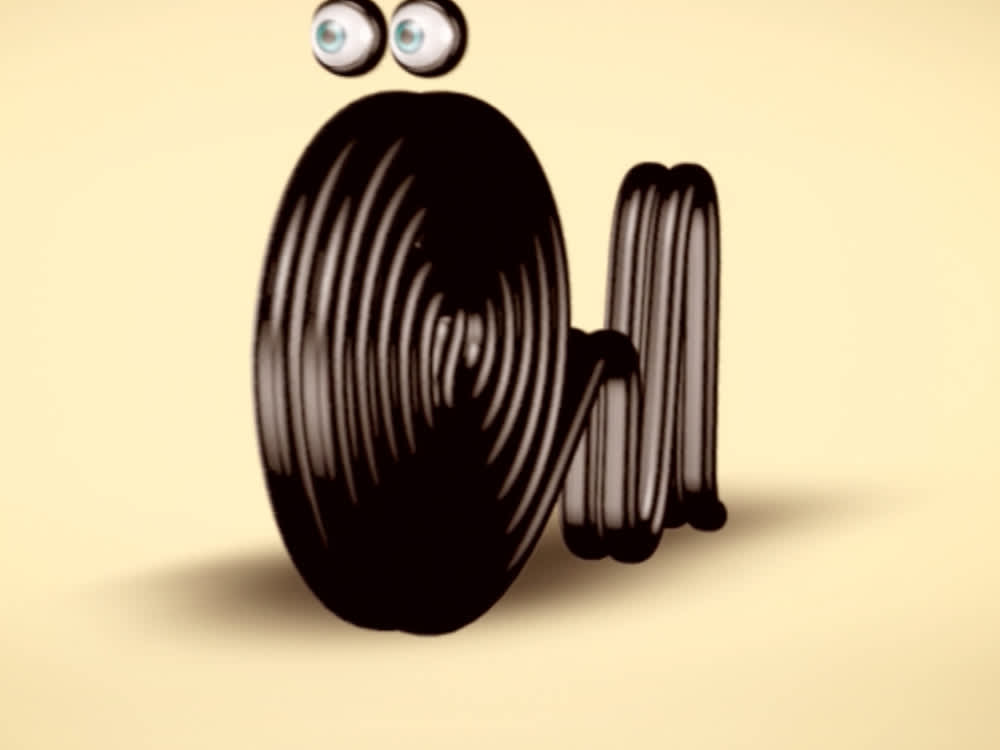
1925
Liquorice produced for the first time
The second foundation stone in HARIBO’s success story: Hans Riegel begins producing liquorice products. Liquorice sticks with HARIBO lettering are one of the first customer favourites, soon followed by many other specialities such as the world-famous Liquorice Wheels of today. And the DANCING BEAR welcomes a cousin: the BLACK BEAR.

1930
Welcome to the middle class
Trade representatives now supply the whole of Germany with HARIBO products. By the year 1933, the company has grown into a solid medium-sized company with 400 employees. At the same time, the main building of the production facility in Bonn is completed. The latest stroke of genius is the simple and catchy advertising slogan: ‘Haribo macht Kinder froh’ (Haribo makes children happy). The DANCING BEAR is joined by a new relative: the TEDDY BEAR.

1945
Difficult times
War and a shortage of raw materials take their toll on the economy – and not even HARIBO is spared. And in 1945, company founder Hans Riegel dies at the early age of 52. His wife Gertrud manages operations on his behalf for a brief period after World War II.
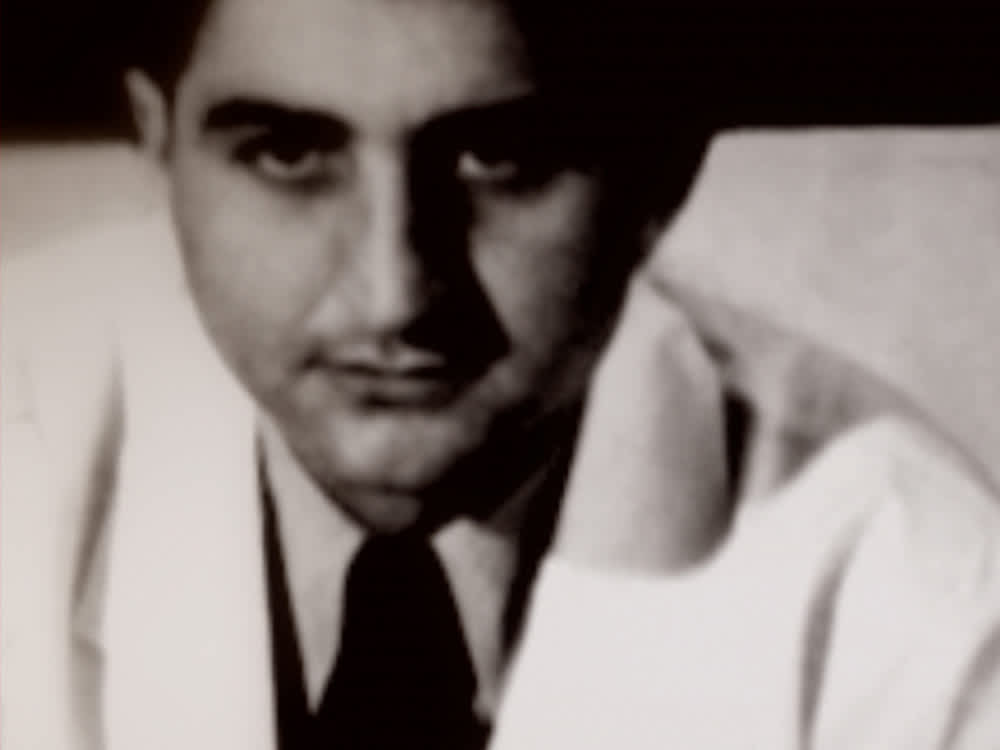
1946
A new generation
Restoration of the company begins with just 30 employees after World War II. In 1946, brothers Hans and Paul Riegel take over company management, relieving their mother. Dr Hans Riegel is in charge of the commercial side, marketing and sales, whilst his brother Paul is responsible for production. Success soon follows, with HARIBO employing around 1,000 people in 1950, just five years after the war.
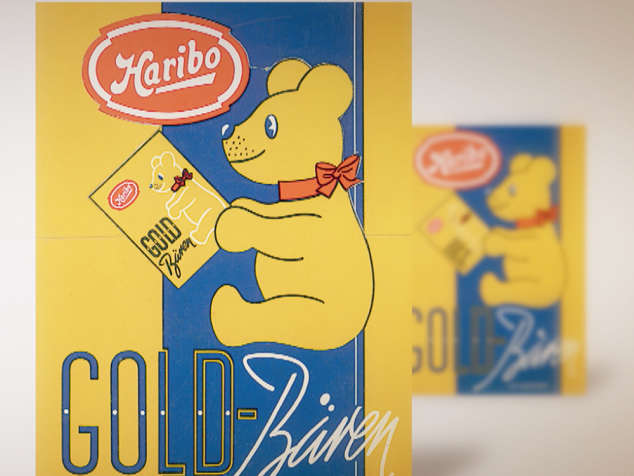
1960
The Goldbears are born!
The HARIBO Goldbears hit the market. The huge success of the sweet cult product prompts HARIBO to have an official birth certificate issued for the Goldbears: in 1967, the German Patent Office officially recognises the Goldbears as a registered trademark. They’re simply more than just gummy bears: find out everything you need to know about our no. 1 product.

1962
HARIBO advertises on TV for the first time
HARIBO recognises early on just how important the new medium of TV is, with HARIBO ads shown for the first time on German TV. In the mid-60s, the advertising slogan ‘Haribo macht Kinder froh’ (Haribo makes children happy) is expanded to include the phrase ‘und Erwachsene ebenso’ (and adults too). Our YouTube channels provides insights into TV ads from more than 50 years of HARIBO advertising history.
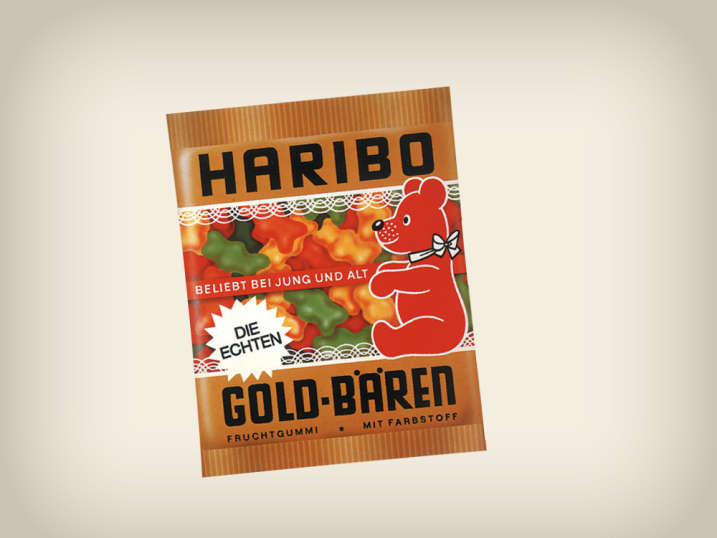
1978
The Goldbears change their shape
Customers’ aesthetic sensibilities change in the 70s, and with them the shape of the Goldbears: the feet, which stick out relatively far, are shortened and the Goldbears are given their compact, stylised appearance, which they still have to this day.
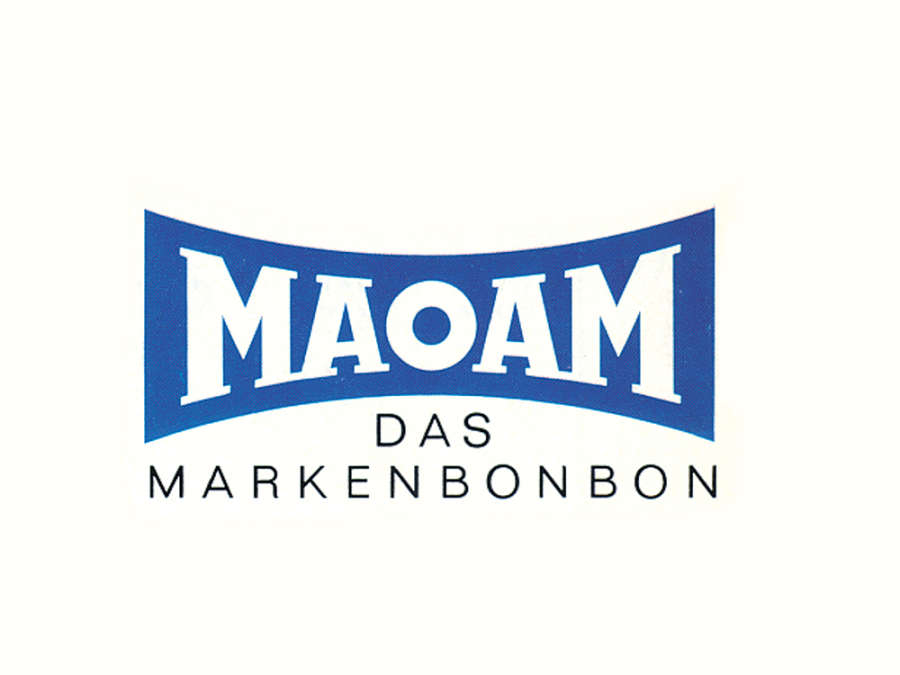
1986
MAOAM now belongs to HARIBO
HARIBO acquires Edmund Münster GmbH & Co. KG, which is now based in Neuss. The long-standing MAOAM brand now belongs to the HARIBO Group. Since it was introduced, the unmistakable MAOAM lettering has remained virtually unchanged and has long been one of the most well-known classics in prominent trademarks.

1989
New colours for the Goldbears
The Goldbears get a makeover: the colours are a bit softer due to the fruit and plant concentrates used. The yellow Goldbear illustration with red bow tie appears on the packaging for the first time.

1991
Gottschalk begins advertising for HARIBO
The advertising partnership between HARIBO and famous entertainer Thomas Gottschalk kicks off and ultimately comes to an end in 2015. This unique 24-year advertising partnership even makes it into the Guinness World Records.

1996
Here come the marshmallows!
HARIBO acquires the Belgian sweets company Dulcia, which has been producing the highly popular Dulcia marshmallow products Soft-Kiss, Cocoballs and Rombiss for decades. In mid-2007, the name Dulcia is removed from the packaging and customers now find the foam sugar products under the name HARIBO Chamallows at the supermarket.

2006
Bonn honours Paul Riegel
The city of Bonn honours Paul Riegel with entry into the city’s Golden Book for the ‘outstanding contributions’ he has made to Bonn as a location of commerce.

2007
85 years of HARIBO Goldbears
For their 85th birthday, the Goldbears were given a new flavour, a new bag design and a uniform, cheerful smile. Apple is the sixth flavour to join the ranks. For consumers, that means the Goldbears are now fruitier!

2008
Advertising that really takes off
Take-off for a unique, ten-year collaboration: two TUIfly Boeing 737-800s are presented as ‘flying ambassadors of the skies’ in the exclusive HARIBO Goldbear design: the GoldbAIR and, from 2010, the HaribAIR. The colourful Tropifrutti aeroplane joins the HARIBO/TUIfly air fleet in May 2015.

2009
The Juicy Goldbears are born!
The Juicy Goldbears are launched, with their soft consistency and now 25% fruit juice. The product is presented with the HIT 2009 award by industry magazine LEBENSMITTEL PRAXIS and named ‘Bestseller 2019’ by magazine RUNDSCHAU für den Lebensmittelhandel.
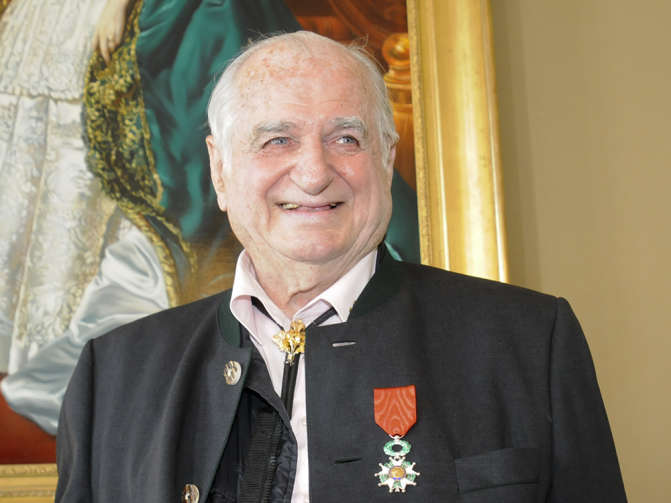
2009
Dr Hans Riegel becomes a Chevalier
The French Foreign Office inducts Dr Hans Riegel into the Legion of Honour as Chevalier, an honour that has been granted to very few foreigners. Dr Hans Riegel had launched the HARIBO brand in France in 1967.

2009
Paul Riegel dies at the age of 83
Co-owner Paul Riegel, who is in charge of production and technology, dies unexpectedly on 2 August 2009. As an experienced inventor, he developed many machines himself, including his most famous invention, the Liquorice Wheel winding machine. Paul Riegel was involved in numerous social projects and organisations, for which he was highly appreciated.
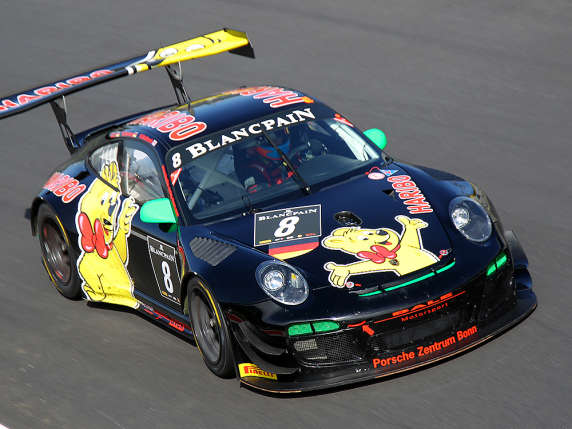
2010
HARIBO and motorsport
After motorsport successes from the 70s to the 90s, HARIBO returns to the racecourse with the Manthey team. With two Porsches featuring a HARIBO design, the team excels in VLN and 24 Hours Nürburgring. In its final season in 2017, HARIBO takes ninth place in the 24 Hours cult race in the ‘Green Hell’ with the Mercedes-AMG performance team.
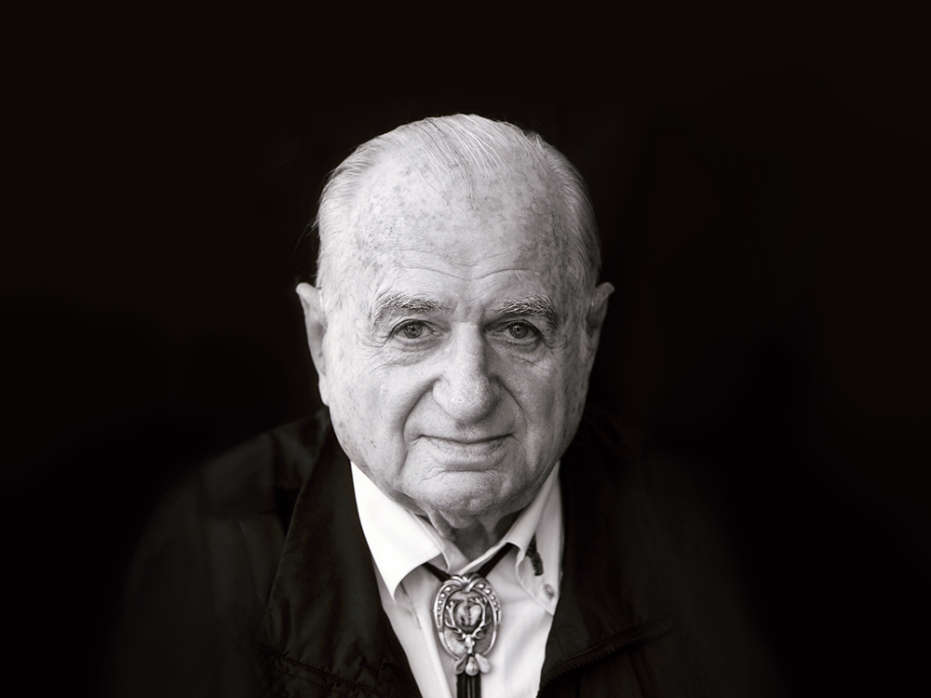
2013
Dr Hans Riegel dies at the age of 90
Dr Hans Riegel dies on 15 October 2013. He had managed the commercial side of HARIBO for 67 years and was thus the oldest active Managing Director in Germany. He not only played a key role in shaping HARIBO, but also the sweets industry in Germany and abroad. Dr Hans Riegel dedicated his life to HARIBO and the desire to make life a little sweeter for people big and small.

2014
Bully, you take over!
The advertising partnership with Thomas Gottschalk comes to an end after 24 years. As the face of HARIBO, he hands over the reins to Michael Bully Herbig and says: ‘I think it’s great that Bully Herbig will be my successor. I couldn’t have asked for anyone better.’
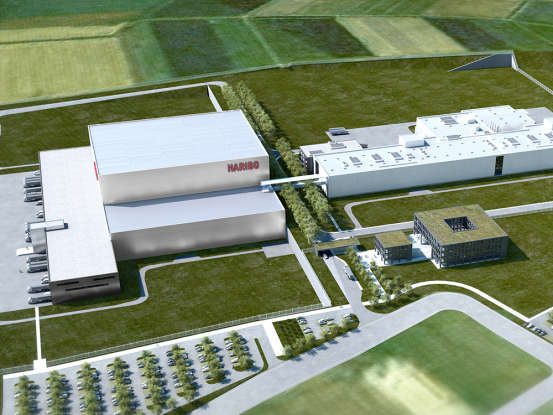
2014
A new start in Grafschaft
In 2013, HARIBO GmbH & Co. KG shareholders vote to establish a new site in Grafschaft, a municipality in Rhineland-Palatinate. Acquired the next year, the 27-hectare site offers the ideal transport connections as well as space for a large logistics centre, one of the most cutting-edge production lines on three levels and a new, modern administration building.

2018
The big move
On 2 May, the employees take up their work in Grafschaft, the new headquarters of HARIBO Germany and international headquarters of the HARIBO Group. Hans Guido Riegel: ‘A big step for us and for HARIBO and another important milestone in the company’s history’. He adds: ‘Bonn will always be a part of HARIBO’.
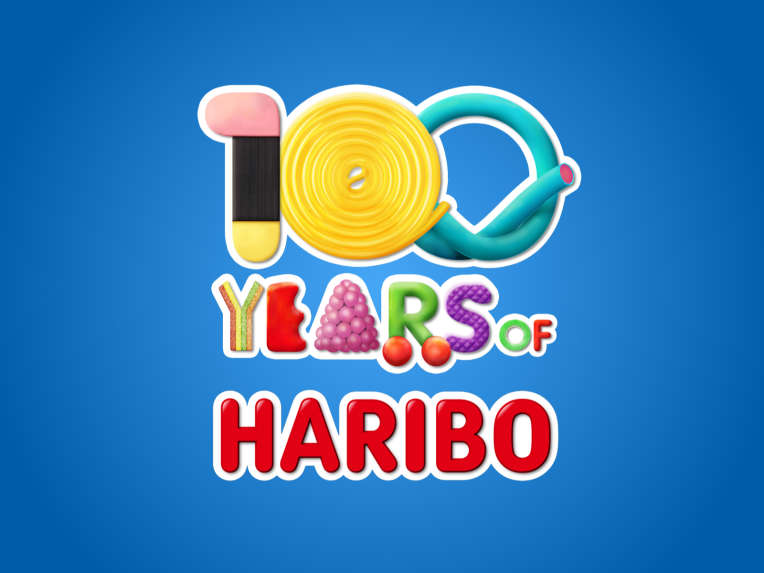
2020
HARIBO: 100 years young
The family business in its third generation will celebrate its anniversary on 13 December 2020. HARIBO products have represented delicious sweet snacks and brought about small moments of joy for 100 years. The anniversary campaign will examine HARIBO’s fascinating history, but more importantly look to the future and ‘celebrate 100 years of joy together’ with the whole of Germany.
HARIBO worldwide
HARIBO’s success has not been limited to the German market: as a global market leader in fruit gummies and liquorice, HARIBO is now available in more than 120 countries around the world. HARIBO produces at 16 locations in ten countries and employs more than 7,000 people, who ensure that consumers always have a sufficient supply of their favourite products – in the usual exceptional quality.
And the product range is anything but static, with its own new sweets added continuously and new quality brands purchased in Germany and abroad. The sales and production networks are being expanded and closely coordinated to ensure the products are promptly available at all times.
Another recipe for success is the development of special sweets whose flavours are specially tailored to local preferences in different countries.

